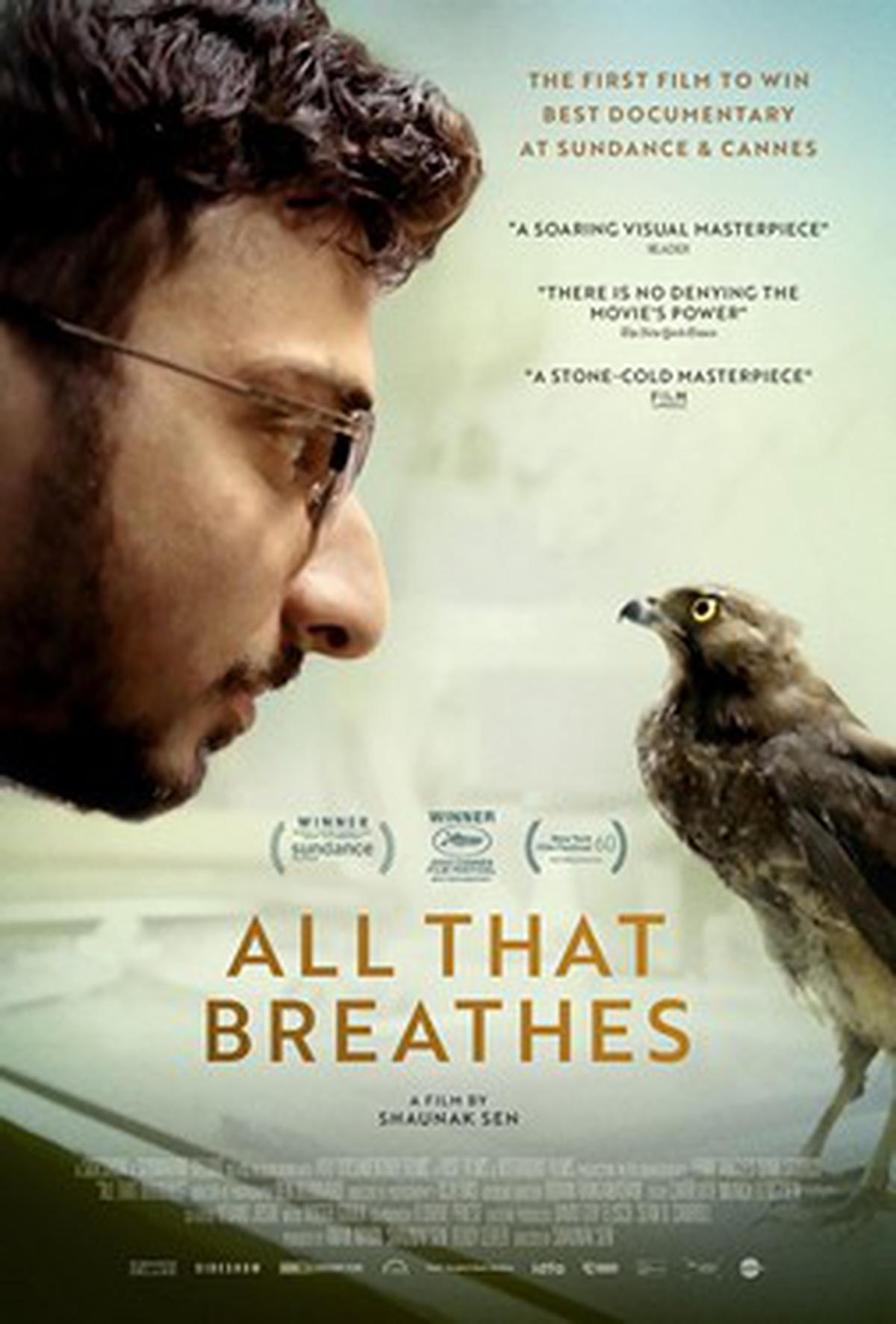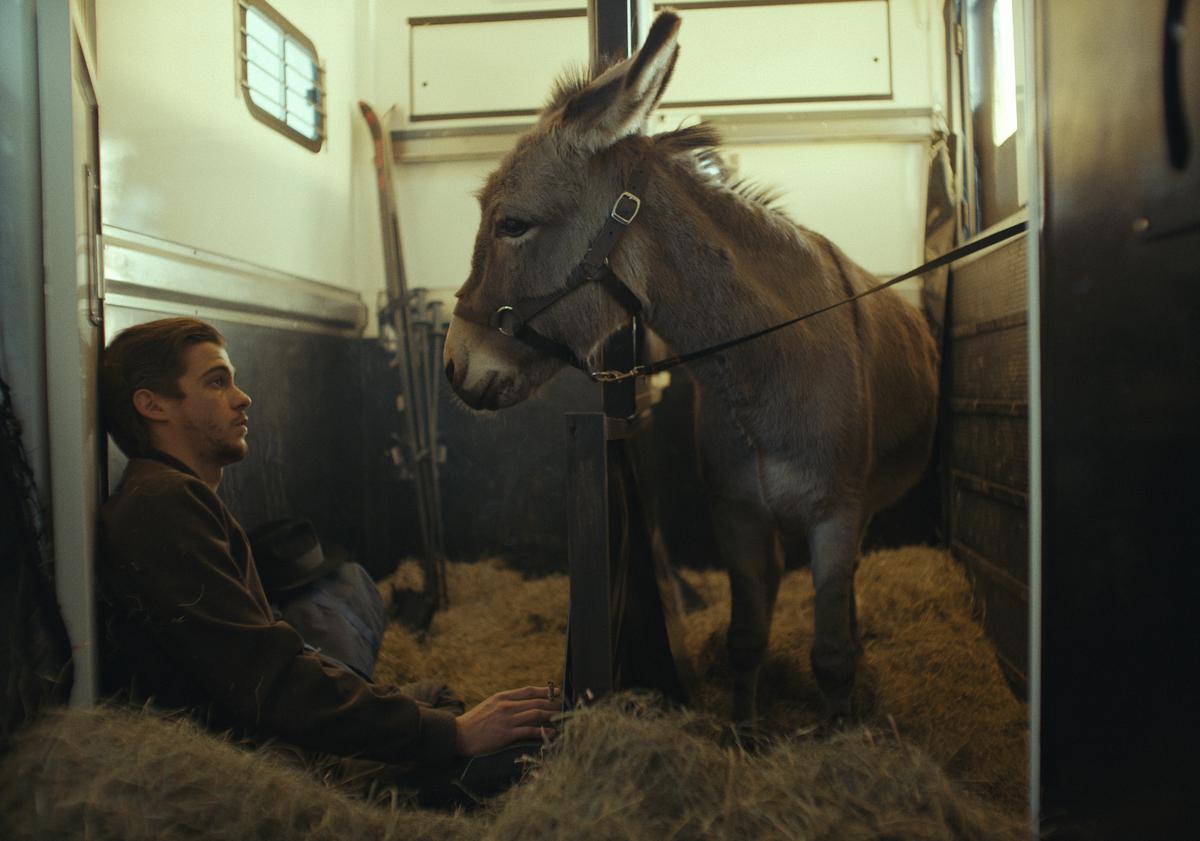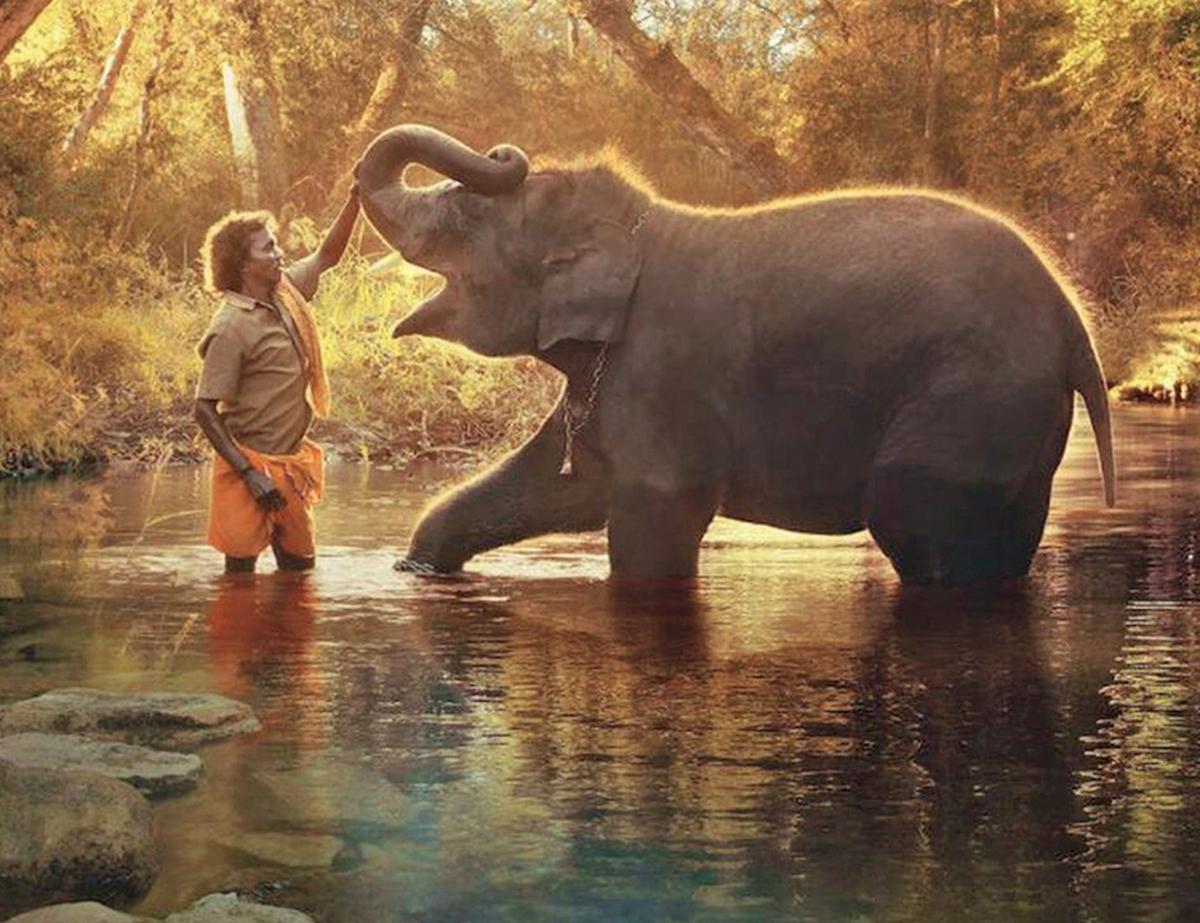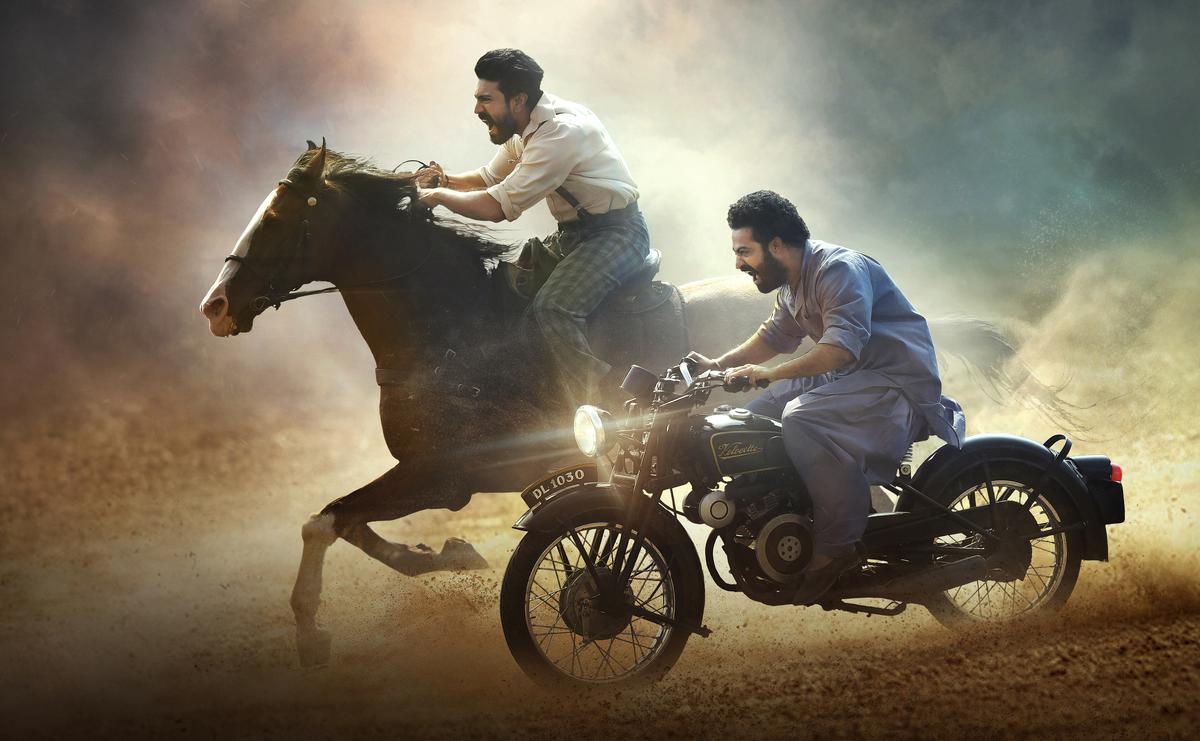The charm of coexistence: how animals act as a metaphor for social decay
Giving a fillip to the abiding charm of the man-animal relationship on celluloid, at least four films, that have made it to the last stage of the 95th Academy Awards, showcase interdependence of species as a metaphor to indicate the perils of the ecological and social decay that are threatening to tear the ecosystem apart. And, along the way, they demolish the anthropocentric biases that have accumulated in society over the years.
Alienation and vulnerability
A stunning piece of creative non-fiction, Shaunak Sen’s All That Breathes, one of the nominees in the Best Documentary Feature Film category follows two enterprising brothers, Muhammad Saud, and Nadeem Shehzad, who pick up injured black kites, falling from the polluted skies of the political capital of India, and nurse them back to health.

All that breathes
| Photo Credit:
WIKIMEDIA COMMONS
The film never frontally engages with the sectarian violence in Delhi in the aftermath of the Citizenship Amendment Act but the growing social alienation of Muslims, captured through stray sounds of television news and announcements, is an integral part of the documentary whose credo is that we belong to the community of air and that one should not differentiate between all that breathes.
One of the reasons that the brothers started their work was because the largest bird hospital in the city did not treat birds of prey. The black kites were left to die because they consumed meat. But the brothers’ devotion has a mystical side as they believe that the raptors eat the sins of those that feed them. As children, the brothers watched black kites draw patterns across the sky while their elders tossed meat upwards for the birds to feed on — an act believed to earn Muslims sawab or the pleasure of the Almighty.
The film talks about how the use of terms such as termites and rats to address people of a religion or social strata has turned a political issue into one of hygiene. The brothers’ care for the birds is juxtaposed with their own situation in the country hit by a manufactured majoritarian fear. Their environmental concerns and ambitions are not separate from their social identity. Both the birds and brothers are constantly vigilant, trying to evolve despite being fatigued by a shortage of resources. Without underlining it, Sen’s meditative work, which uses techniques that are usually used to orchestrate fiction, reflects on their vulnerability and resilience and the lyrical bond that they have forged over the years to save each other.
It reminds us of the kinship between Iqbal and his eagle Allah Rakha in Manmohan Desai’s Coolie (1983) where the protagonist combined a sickle and hammer and the Islamic symbol of high honour to destroy the opposition.
From the eyes of an animal
This man-animal bond shines through in Polish filmmaker Jerzy Skolimowski’s EO, one of the contenders for the Best International Film Award.

This image released by Sideshow and Janus Films shows Lorenzo Zurzolo in a scene from EO.
| Photo Credit:
AP
Told from an animal’s gaze, it is about a circus donkey who is groomed by a young female artist Kasandra. The animal reciprocates the care with unconditional love which conventionally could only be experienced by humans. When animal rights activists separate Eo from Kasandra, the donkey’s life is reduced to a long ordeal. In Skolimowski’s universe, Eo is central to the story and the human characters are dispensable, very much like the animal strands in human stories. In its treatment, EO is avant-garde, draws from Robert Bresson’s Au Hasard Balthazar (1966), and provides a metaphysical and sublime experience to the audience. But at the same time, it strangely reminds one of a childhood film, Azadi Ki Or (1986), which told the story from the point of view of a pair of monkeys who are used by a selfish street performer. He tortures them to earn money for him through their various acts. Unlike Eo, the monkeys had no love lost for the madari and the pair tricks the man and breaks free from his bondage. What follows are some simple and goofy adventures that the monkeys go through but at the end, we are left with a disturbing sense that they disliked humanity. That feeling resurfaced after watching EO.
The mother of elephants
Kartiki Gonsalves’s The Elephant Whisperers, nominated in the Best Documentary Short Subject category, is a gentler take on the man-animal conflict that gradually grows on you. Beyond the enchanting visuals of the verdant forest at different times of the year, the warmth between baby elephants and their tribal caregivers provides an interesting insight into how the lines between species blur. For the Kattunayakans, the well-being of the forest is all that matters. They live off the forest but also protect it. Like the brothers in All That Breathes, there is a divine connection here as well, for Bomman and Bellie see Lord Ganesha in the elephants they nurture. The emotional interdependence is also not too different. When Bellie’s ex-husband was killed by a tiger, she began to fear the place she grew up in. Similarly, when Raghu was separated from his herd after his mother died of electrocution, he was badly injured and forlorn. Bellie says when she first met Raghu, he was tugging at her clothes like a child and she instantly decided to give the motherless child a chance. She sees her daughter whom she lost in him. Towards the end, she says, Raghu helped her find the voice that she lost to grief for now everyone sees her as the mother of elephants.

The Elephant Whisperers
As Sen zooms out of the everydayness of Saud and Nadeem’s engagement with raptors to shoot life writ large on the canvas of the city, Gonsalves’s gaze also moves out from the vast Madumalai forest a couple of times to show Bomman, Bellie, and Raghu’s place in the heartless world outside for whom they both are part of some sort of visual safari. It tells us how far we have come from the innocent Haathi Mere Saathi (1971) days.
In popular cinema
Similarly, S.S. Rajamouli’s RRRis more than just the electric “Naatu Naatu”. The terrific scene where Bheema unleashes wild animals on the unsuspecting colonial masters is not just visually rich but also carries an important message. For those who could see, the Gond girl Malli becomes a symbol of the natural wealth of the tribals that continues to be ravaged by those in power for their vested interests and when they retaliate, they are termed as Naxalites.
The tribal who lives under the assumed identity of a Muslim is brutalised by a British officer like an animal. Perhaps, because he is seen as a double outcast. So, he joins forces with the beasts to pay them back in the same coin. When Bheema traps a tiger in the jungle, he kisses it on his forehead, forging an inter-specific bond that can’t be described in words.

A still from RRR
| Photo Credit:
SPECIAL ARRANGEMENT
Animals have played critical roles in popular Hindi films and it is perhaps rooted in the way Indians traditionally worship nature. Perhaps, that is why Life of Pi has to have an Indian protagonist. In Gai Aur Gori (1973), Jaya Bhaduri has a cow as her confidante and in Sholay (1975), Hema Malini as Basanti uses the analogy of her mare Dhanno to make a feminist point: “If Dhanno could pull a cart despite being a female, why can’t Basanti ride it?” In Rekha’s Khoon Bhari Maang (1988), it is the animals who recognise their master when even her kids fail to discern their mother in a new face. In Dil Dhadakne Do(2015), the bullmastiff, voiced by Aamir Khan and penned by Javed Akhtar, presents the audience perspective of the dysfunctional family. Over the years, like the shape-shifting snakes of Nagin, Nagina, and Doodh Ka Karz, the narratives have taken newer forms. Like EO, the activists have ensured that animals no longer give actors an inferiority complex with their natural performance but the idea of coexistence lives on as we have watched recently in Bhediya and Lakadbaggha.
For all the latest Entertainment News Click Here
For the latest news and updates, follow us on Google News.
